Efficient Waste Clearance in Disposal London: Your Comprehensive Guide
Understanding Waste Clearance Services
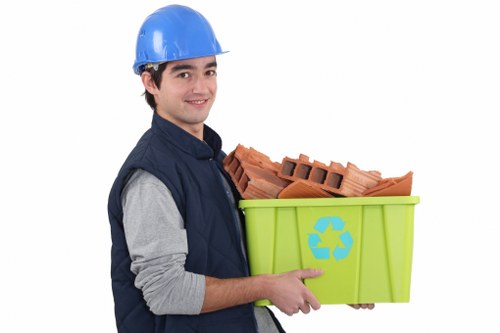
Waste clearance is an essential service in any metropolitan area, ensuring that waste is managed responsibly and efficiently. In London, the demand for reliable waste clearance and disposal services has skyrocketed due to the city's dense population and ongoing construction projects. Whether you're a homeowner, business owner, or involved in large-scale construction, understanding the nuances of waste clearance in London is crucial.
Effective waste clearance not only contributes to a cleaner environment but also ensures compliance with local regulations. Improper disposal can lead to fines, legal issues, and environmental degradation. Therefore, partnering with a reputable waste clearance service in London is imperative for both individuals and businesses.
In this comprehensive guide, we'll delve into the various aspects of waste clearance in Disposal London, exploring the types of services available, the benefits they offer, and how to choose the right provider for your specific needs.
Types of Waste Clearance Services

Waste clearance services in London can be broadly categorized into residential, commercial, and industrial services. Each category caters to different types of waste and requires specialized handling and disposal methods.
Residential Waste Clearance: This service is tailored for homeowners and tenants, focusing on the removal of household waste such as old furniture, appliances, garden waste, and general clutter. Residential waste clearance services often include small-scale removal, same-day service options, and flexible scheduling to accommodate clients' needs.
Commercial Waste Clearance: Businesses generate a significant amount of waste, ranging from office waste like paper and electronics to larger items such as furniture and equipment. Commercial waste clearance services are designed to handle bulk waste, offering scheduled pickups, recycling options, and compliance with commercial waste regulations.
Industrial Waste Clearance
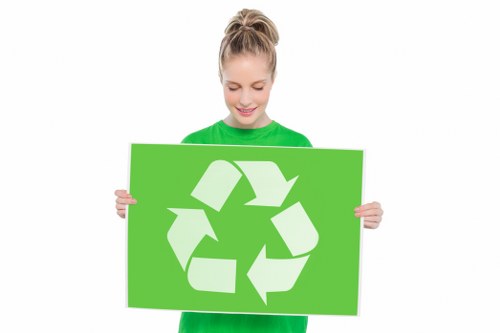
Industrial waste clearance involves the removal and disposal of hazardous and non-hazardous waste generated by manufacturing plants, construction sites, and other industrial operations. This type of service requires adherence to strict safety and environmental standards, ensuring that waste is handled responsibly and disposed of in compliance with governmental regulations.
Construction Waste Clearance: Construction projects produce various types of waste, including concrete, bricks, wood, and metals. Specialized construction waste clearance services are equipped to handle these materials, providing dumpsters, skip hire, and on-site waste management solutions.
Hazardous Waste Clearance: Handling hazardous waste requires specialized training and equipment. Services in this category focus on the safe removal, transportation, and disposal of substances like chemicals, asbestos, and electronic waste, minimizing environmental impact and ensuring safety.
Benefits of Professional Waste Clearance

Engaging professional waste clearance services in London offers numerous advantages that go beyond mere convenience. Here are some key benefits:
- Time-Saving: Professionals handle the entire waste clearance process, freeing up your time for other important tasks.
- Cost-Effective: Avoid the costs associated with renting equipment, transportation, and potential fines for improper disposal.
- Environmental Responsibility: Reputable services prioritize recycling and environmentally friendly disposal methods, reducing your carbon footprint.
- Safety: Proper handling of heavy or hazardous waste minimizes the risk of accidents and injuries.
- Compliance: Ensures that all waste is disposed of in accordance with local regulations, avoiding legal issues.
By leveraging the expertise of professional waste clearance providers, you can ensure that your waste is managed efficiently and responsibly.
Choosing the Right Waste Clearance Service

Selecting the appropriate waste clearance service in London involves considering several factors to ensure you receive quality and reliable service. Here are some tips to guide your decision:
- Assess Your Needs: Determine the type and volume of waste you need to clear. This will help you choose a service that specializes in your specific requirements.
- Check Credentials: Ensure the company is licensed and adheres to local waste disposal regulations.
- Read Reviews: Customer testimonials and reviews can provide insights into the company's reliability and quality of service.
- Compare Pricing: Obtain quotes from multiple providers to compare prices, but be wary of services that seem too cheap, as they may compromise on quality.
- Inquire About Recycling: Opt for services that prioritize recycling and environmentally friendly disposal methods.
- Availability: Choose a service that offers flexible scheduling and can accommodate your timeline.
Taking the time to evaluate these factors will help you select a waste clearance service that meets your needs effectively.
Environmental Impact of Waste Clearance

The environmental implications of waste clearance cannot be overstated. Responsible waste management plays a critical role in reducing landfill usage, conserving natural resources, and minimizing pollution.
Recycling and Reuse: Professional waste clearance services often include recycling and repurposing options, ensuring that materials like metal, paper, and plastics are processed and reused, thereby conserving resources and reducing the need for new materials.
Reducing Landfill Pressure: Efficient waste clearance reduces the volume of waste sent to landfills, prolonging their lifespan and minimizing the environmental hazards associated with large landfill sites.
- Energy Conservation: Recycling processes generally consume less energy compared to producing new materials from scratch.
- Pollution Reduction: Proper waste management reduces the release of harmful pollutants into the air and water, safeguarding ecosystems and public health.
By choosing eco-friendly waste clearance services, individuals and businesses contribute to a sustainable future.
Regulations and Compliance
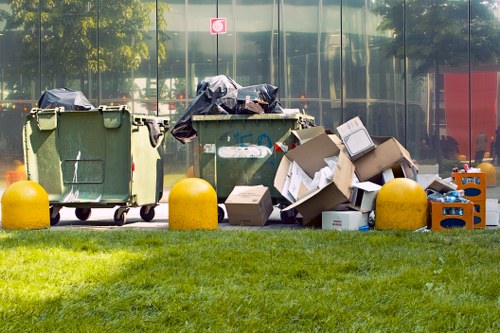
Waste clearance in London is governed by a set of regulations designed to ensure that waste is managed responsibly and sustainably. Compliance with these regulations is mandatory for all waste clearance providers and customers alike.
Local Authority Regulations: Local councils in London have specific guidelines regarding waste disposal, including restrictions on certain types of waste and requirements for obtaining permits for large-scale waste clearance.
Environmental Protection Act: This act mandates proper waste management practices, prohibiting the illegal disposal of waste and ensuring that hazardous materials are handled safely.
- Waste Hierarchy: The regulations follow a hierarchy prioritizing waste prevention, followed by reuse, recycling, recovery, and disposal.
- Licensing Requirements: Companies involved in waste clearance need appropriate licenses to operate, ensuring they adhere to environmental and safety standards.
Staying informed about these regulations and choosing a compliant waste clearance service helps avoid legal complications and promotes environmental stewardship.
Innovations in Waste Clearance
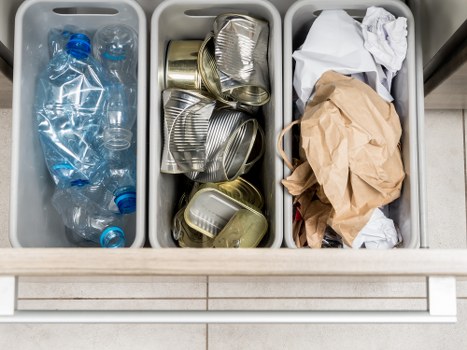
The waste clearance industry in London is continually evolving, adopting new technologies and practices to enhance efficiency and sustainability. Innovations are driving the sector towards more effective waste management solutions.
Automated Sorting Systems: Advanced sorting technologies are being implemented to segregate waste more efficiently, improving recycling rates and reducing contamination.
Smart Waste Management: IoT devices and data analytics are being used to optimize waste collection routes, monitor bin levels in real-time, and enhance overall operational efficiency.
- Artificial Intelligence: AI-powered systems assist in identifying and categorizing waste materials, streamlining the sorting process.
- Sustainable Practices: Companies are increasingly adopting green practices, such as using electric vehicles for waste collection and investing in renewable energy sources.
These innovations not only improve the effectiveness of waste clearance services but also contribute to environmental conservation efforts.
Cost Factors in Waste Clearance

Understanding the cost structure of waste clearance services in London is essential for budgeting and making informed decisions. Several factors influence the pricing of these services:
- Type of Waste: Hazardous and bulky waste typically incurs higher disposal costs due to specialized handling and processing requirements.
- Volume of Waste: The amount of waste being cleared directly impacts the cost, with larger volumes requiring more resources and transportation.
- Service Frequency: Regular or scheduled waste clearance services may offer discounted rates compared to one-time clearances.
- Accessibility: The ease of access to the waste location can affect pricing, with hard-to-reach areas potentially incurring additional fees.
- Location: Disposal fees can vary based on the specific area within London, influenced by local council rates and environmental levies.
By understanding these factors, you can better estimate the costs involved and choose a service that offers the best value for your needs.
Tips for Effective Waste Clearance
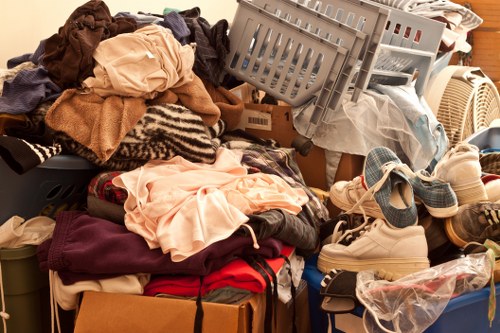
Maximizing the efficiency of your waste clearance process involves strategic planning and adherence to best practices. Here are some actionable tips to ensure a smooth and effective clearance experience:
- Plan Ahead: Schedule waste clearance services in advance to ensure availability and timely removal.
- Sort Your Waste: Segregate recyclable materials from general waste to streamline the clearance process and promote recycling.
- Consolidate Items: Reduce the volume of waste by consolidating items, such as breaking down furniture or pooling items with neighbors or businesses.
- Remove Hazardous Materials: Safely dispose of hazardous waste separately, following local guidelines and regulations.
- Communicate Clearly: Provide detailed information to the waste clearance service about the types and volumes of waste to ensure appropriate handling.
Implementing these strategies can enhance the efficiency of waste clearance operations, reducing costs and environmental impact.
Choosing Eco-Friendly Disposal Options
[IMG_11]As environmental concerns become increasingly paramount, opting for eco-friendly disposal methods is more important than ever. Sustainable waste clearance practices not only benefit the environment but also align with corporate social responsibility goals for businesses.
Recycling: Ensure that your waste clearance service prioritizes recycling, separating materials like glass, metal, paper, and plastics for reuse.
Composting: Organic waste such as garden refuse and food scraps can be composted, reducing landfill contribution and providing valuable soil amendments.
- Donation: Items that are still in good condition can be donated to charities or repurposed, extending their lifecycle and reducing waste.
- Energy Recovery: Some waste can be converted into energy through processes like anaerobic digestion and incineration, providing an alternative to traditional disposal methods.
By selecting a waste clearance service that emphasizes sustainable practices, you contribute to environmental preservation and promote a circular economy.
Common Challenges in Waste Clearance
[IMG_12]While waste clearance services offer significant benefits, they also encounter various challenges that can impact their efficiency and effectiveness. Understanding these challenges helps in selecting a service that can navigate them effectively.
Regulatory Compliance: Adhering to diverse and evolving waste management regulations can be complex, requiring continuous updates and training.
Volatile Waste Generation: Fluctuations in waste volumes, especially in commercial and industrial sectors, can strain resources and affect service consistency.
- Resource Allocation: Balancing resources to handle varying waste types and volumes efficiently is a persistent challenge.
- Environmental Impact: Minimizing the environmental footprint while managing large volumes of waste requires innovative solutions and sustainable practices.
By choosing a waste clearance service with robust systems and a commitment to overcoming these challenges, you ensure reliable and responsible waste management.
Future Trends in Waste Clearance
[IMG_13]The waste clearance industry is poised for significant advancements as technological innovations and environmental priorities shape its future. Here are some emerging trends to watch:
- Digital Integration: The adoption of digital platforms for scheduling, tracking, and managing waste clearance services enhances efficiency and customer experience.
- Advanced Recycling Technologies: Innovations in recycling processes aim to handle a broader range of materials more effectively, increasing recycling rates.
- Zero-Waste Initiatives: Striving for zero waste involves comprehensive strategies to eliminate waste generation through prevention, reduction, and recycling.
- Green Certifications: Companies are seeking certifications that validate their commitment to sustainable waste management practices.
- Collaborative Efforts: Partnerships between waste clearance services, municipalities, and businesses foster integrated waste management solutions.
Staying abreast of these trends ensures that waste clearance services evolve to meet future demands and environmental standards.
How to Prepare for Waste Clearance Day
[IMG_14]Proper preparation can significantly enhance the efficiency of your waste clearance day. Here are some steps to ensure a seamless process:
- Inventory Your Waste: Make a list of items you intend to dispose of. This helps in communicating with the waste clearance service and ensures nothing is overlooked.
- Sort and Categorize: Separating waste into categories like recyclables, hazardous materials, and general waste can expedite the clearance process.
- Secure Large Items: Disassemble or secure large items that may be cumbersome to transport, such as furniture or appliances.
- Clear Access Points: Ensure that the area where waste will be collected is easily accessible, removing obstacles that may hinder the process.
- Communicate Special Instructions: Inform the service provider about any specific handling requirements, such as fragile items or restricted access areas.
By following these preparation steps, you can make your waste clearance experience more efficient and stress-free.
Maximizing Recycling Efforts
[IMG_15]Enhancing your recycling efforts during waste clearance not only supports environmental sustainability but also reduces the overall waste burden. Here are strategies to maximize recycling:
- Educate Yourself: Understand what materials can be recycled and familiarize yourself with local recycling guidelines.
- Separate Waste: Allocate separate bins or containers for different types of recyclable materials to streamline the process.
- Clean Recyclables: Ensure that recyclable items are clean and free from contaminants to improve recycling quality and efficiency.
- Choose Recyclable Products: Opt for products with recyclable packaging or those made from recycled materials to support the recycling industry.
- Partner with Green Services: Select waste clearance services that prioritize recycling and have established partnerships with recycling facilities.
Implementing these practices enhances the effectiveness of your waste clearance efforts and contributes to a sustainable environment.
Waste Clearance and Community Health
[IMG_16]Proper waste clearance has a direct impact on community health and well-being. Accumulated waste can become a breeding ground for pests, contribute to pollution, and create unsightly environments. Effective waste management fosters a healthier and more vibrant community.
Public Health: Timely and efficient waste clearance reduces the risk of disease transmission by eliminating potential breeding grounds for insects and rodents.
Environmental Quality: Proper disposal prevents the contamination of air, soil, and water bodies, safeguarding ecosystems and public health.
- Aesthetic Appeal: Clean and well-maintained public spaces enhance the quality of life for residents and visitors alike.
- Economic Benefits: Efficient waste management can boost local economies by attracting businesses and tourism, contributing to overall community prosperity.
Investing in reliable waste clearance services is investing in the health and vitality of the community.
Emergency Waste Clearance
[IMG_17]Unexpected events such as natural disasters, accidents, or sudden large-scale cleanups necessitate swift and efficient waste clearance responses. Emergency waste clearance services are equipped to handle urgent situations, providing timely removal and disposal to mitigate immediate risks.
Rapid Response: Emergency services prioritize quick mobilization to address urgent waste clearance needs, minimizing potential hazards.
Specialized Equipment: These services often utilize specialized equipment and trained personnel to handle diverse and potentially hazardous waste types.
- Comprehensive Coverage: Emergency waste clearance covers a wide range of scenarios, from flood cleanup to debris removal after accidents.
- Coordination with Authorities: Collaboration with local authorities ensures that waste clearance aligns with broader emergency response efforts.
Having access to reliable emergency waste clearance services provides peace of mind and ensures swift action during critical situations.
Sustainable Waste Disposal Practices
[IMG_18]Embracing sustainable waste disposal practices is essential for minimizing environmental impact and promoting long-term ecological balance. Sustainable practices encompass strategies that prioritize waste reduction, reuse, and recycling over traditional disposal methods.
Waste Minimization: Reducing the amount of waste generated through conscious consumption, efficient production processes, and innovative packaging solutions.
Reuse and Upcycling: Extending the lifecycle of products and materials by repurposing them for new uses, thereby reducing the need for new resources.
- Energy Efficiency: Implement energy-efficient practices in waste management operations to reduce carbon emissions and conserve energy resources.
- Community Engagement: Involving the community in waste reduction initiatives fosters collective responsibility and promotes sustainable living.
Adopting these sustainable practices contributes to environmental preservation and aligns with global efforts to combat climate change.
Technological Advancements in Waste Management
[IMG_19]Technological advancements are revolutionizing waste management, offering innovative solutions to traditional challenges. These advancements enhance efficiency, accuracy, and sustainability in waste clearance operations.
Automation and Robotics: Automated systems and robotic technologies streamline the sorting and processing of waste, increasing throughput and reducing human error.
Data Analytics: Leveraging data to optimize waste collection routes, predict waste generation patterns, and improve resource allocation.
- Artificial Intelligence: AI-driven systems aid in predictive maintenance, waste categorization, and operational optimization.
- Blockchain Technology: Enhances transparency and traceability in waste management, ensuring accountability and compliance.
These technological innovations are paving the way for more efficient, transparent, and sustainable waste management practices.
Community Initiatives and Waste Clearance
[IMG_20]Community-driven initiatives play a pivotal role in promoting effective waste clearance and fostering a culture of sustainability. Engaging the community encourages collective action and enhances the overall impact of waste management efforts.
Recycling Programs: Local recycling initiatives educate and empower residents to participate actively in waste reduction and recycling activities.
Clean-Up Drives: Organized clean-up events mobilize community members to actively participate in maintaining clean and healthy environments.
- Educational Workshops: Informative sessions raise awareness about effective waste management practices and the importance of recycling.
- Partnerships with Local Businesses: Collaborating with businesses fosters a community-wide approach to waste reduction and sustainable practices.
These initiatives not only improve waste clearance outcomes but also strengthen community bonds and promote environmental responsibility.
Final Thoughts on Waste Clearance in London
[IMG_21]Waste clearance in London is a multifaceted service that extends beyond mere waste removal. It encompasses environmental stewardship, regulatory compliance, technological innovation, and community engagement. By understanding the various aspects of waste clearance, individuals and businesses can make informed decisions that contribute to a cleaner, healthier, and more sustainable London.
Partnering with a reputable waste clearance service ensures that your waste is managed responsibly, aligning with both personal and environmental goals. Embrace the benefits of professional waste clearance and take an active role in promoting sustainable living within the vibrant city of London.
Ready to Experience Top-Notch Waste Clearance? Contact us today to book your service and contribute to a cleaner, greener London!